California ditched coal. The gas company is worried it’s next
- Share via
Every day, millions of Californians burn a planet-warming fossil fuel to cook dinner, stay warm or take a hot shower.
Persuading people to stop using that fuel, natural gas, is shaping up to be the next act in California’s war on climate change.
And unlike the state’s successful push to ditch coal — which mostly affected out-of-state mines and power plants, and was relatively painless for California residents and businesses — early efforts to phase out gas are already facing pushback from a powerful homegrown company.
Southern California Gas Co., which serves nearly 22 million people from the Central Valley to the U.S.-Mexico border, is determined to prevent a future without gas from coming to pass, even if it may not arrive for years or decades. The utility has begun a sweeping campaign to preserve the role of its pipelines in powering society — an outcome critics say would undermine California’s efforts to fight climate change.
In city council chambers across Southern California, SoCalGas is working to convince local officials that policies aimed at replacing gas with electricity would be wildly unpopular. More than 100 cities and counties have endorsed the company’s push for “balanced energy solutions” — a powerful base of support that it can use as leverage in the coming years as it fights potential laws and regulations that might diminish demand for its product.
Behind the scenes, the gas company has funded a self-styled grass-roots advocacy group pushing the same agenda. The company is also one of the funders of a national trade group’s pro-natural gas campaign, which includes a public relations blitz targeting millennials and support for Trump administration regulatory overhauls.
“I don’t think anyone’s as threatened by what we need to do to save the planet as SoCalGas,” said Matt Vespa, an attorney with the nonprofit law firm Earthjustice, who has represented the Sierra Club in regulatory battles with the gas company.
In some ways, SoCalGas has no choice but to fight for self-preservation — it’s a subsidiary of San Diego-based Sempra Energy, a publicly traded company with a fiduciary duty to serve shareholders. But it’s also a legally sanctioned monopoly subject to oversight from California lawmakers and regulators, who expect the gas company and other investor-owned utilities to help the state achieve its climate change goals.
With those overseers in mind, the gas company argues that it’s offering a solution to the climate crisis.
SoCalGas wants to use organic waste from dairy farms, landfills and sewage treatment plants to produce biomethane, also known as renewable gas. The Los Angeles-based company says it can solve two problems at once, limiting heat-trapping methane emissions from those facilities and reducing its own climate effects by replacing some of the natural gas in its system with renewable gas.
The utility is already injecting small amounts of renewable gas into its pipelines, and is working to add more.
“We have pipelines. We want them to be used and useful,” SoCalGas executive George Minter said in an interview earlier this year.

Many clean energy advocates say renewable gas faces serious long-term hurdles. They see the substitute fuel as a dangerous dead end — a promotional ploy meant to distract Californians from the incompatibility of the gas company’s business model with the need to eliminate planet-warming emissions.
For investors in the gas company’s corporate parent, Sempra Energy, there’s a lot of money on the line. Revenue from residential sales at SoCalGas was nearly $2.3 billion in 2017, according to the American Gas Assn. — the second-most of any utility on the association’s list, after Pacific Gas & Electric.
Battling electrification
A decade ago, some environmentalists saw gas as a “bridge fuel” that could help displace dirtier coal until renewable energy technologies improved. But now that solar and wind power are cheap and California has nearly vanquished coal, gas is becoming one of the state’s main climate battlefronts.
The fight could soon be playing out in living rooms and kitchens, where a growing number of activists and city officials hope to replace gas with electricity.
In July, Berkeley became the first city in the country to ban gas hookups in most new residential construction. Nearly a dozen other California cities, including San Jose and Santa Monica, have approved building codes this year incentivizing or requiring electric appliances in new buildings.
A Berkeley-style ban is being considered in San Francisco, and Los Angeles officials hope to start phasing gas out of buildings as part of Mayor Eric Garcetti’s Green New Deal.
Natural gas is California’s largest electricity source, so switching buildings from gas to electricity doesn’t eliminate fossil fuels. But the electricity supply is getting cleaner as more solar and wind farms are built, prompting environmental groups to spend more time and money pushing building electrification.
“The gas industry is gearing up for these fights nationally. But the place where it’s already a live battle is in Southern California,” said David Pomerantz, executive director of the Energy and Policy Institute, a climate watchdog group that focuses on utilities and the fossil fuel industry.
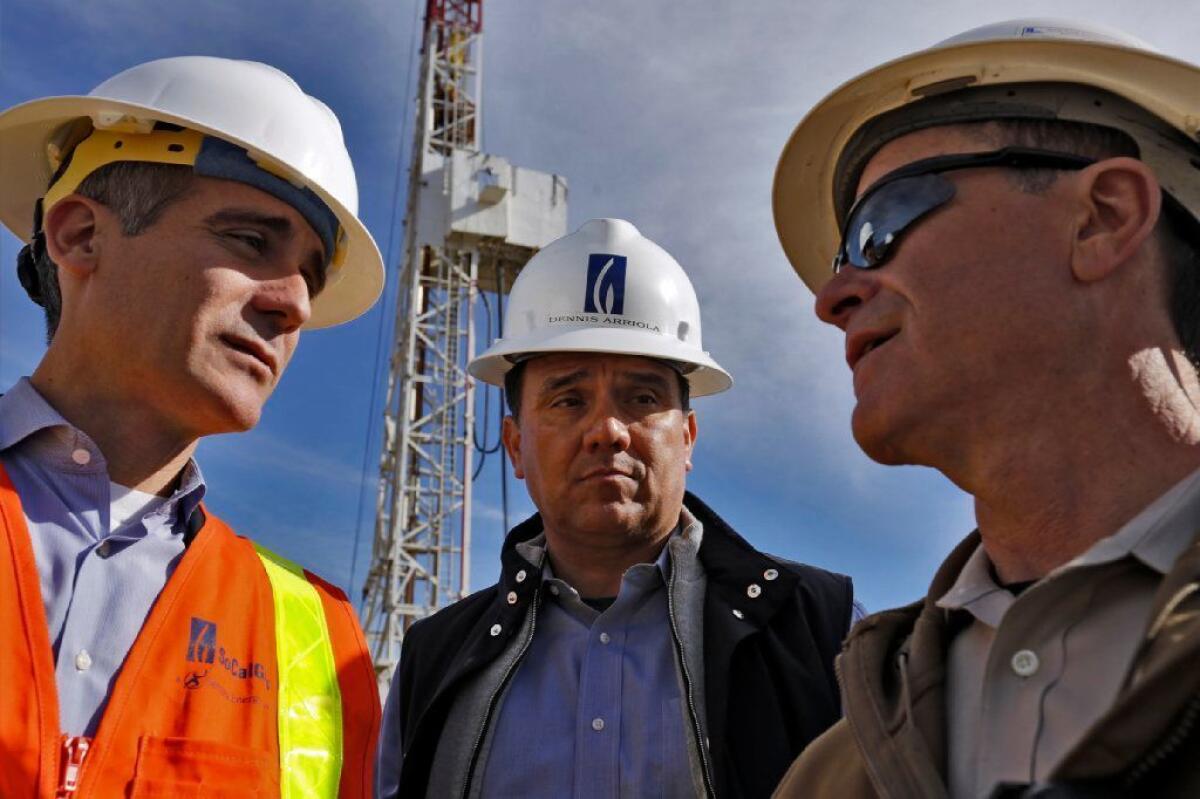
In the long run, Southern California Gas could see most of its legacy business disappear.
Policymakers have set statewide goals of carbon neutrality by 2045 and an 80% reduction in greenhouse gas emissions by 2050, relative to 1990 levels. Achieving those goals could leave little room for fossil natural gas use in heating and cooking — the bread and butter of the gas company’s business.
The consulting firm Energy and Environmental Economics presented research to state officials this summer finding that electrification is one of the cheapest ways to reduce climate pollution — and that widespread electrification could reduce gas use in residential buildings over 90% by mid-century.
Sempra acknowledged the risks in its latest annual financial report, writing that “legislators and stakeholder, advocacy and activist groups have expressed a desire to further limit or eliminate reliance on natural gas as an energy source by advocating increased use of renewable energy and electrification.”
Faced with growing support for electrification, SoCalGas is marshaling local governments to its cause.
The company is warning local officials that California will ban gas and force residents to pay thousands of dollars for electric appliances — unless they join the utility’s campaign against electrification. SoCalGas has made presentations to dozens of city councils, county commissions and local business groups over the last year, capitalizing on the pocketbook issue of energy bills, and on many politicians’ distaste for mandates from Sacramento.
Since February, at least 100 cities and four counties have approved similarly worded resolutions, originally drafted by SoCalGas, calling for “balanced energy solutions.” Many local governments have approved the resolutions unanimously, often with little or no public discussion, a Times analysis found.
A “model resolution” prepared by SoCalGas and provided to local officials warns that state policymakers “are increasingly proposing new legislation and regulations eliminating choice of energy by mandating technologies to power buildings.” It also declares that the city being asked to approve the resolution “opposes proposed state legislation and policy that eliminate local control by mandating technologies that can be used to power buildings.”
Electrification advocates say SoCalGas is overstating the costs of phasing out gas. But the company’s messaging has resonated, in part because it has chosen its targets carefully. A document titled “list of potential early adopters” — which the gas company sent to the city of Chino Hills — shows the utility planned to avoid certain cities, including some with a reputation for environmentalism, such as Los Angeles, Palm Springs and Santa Monica.
The Times could find only one city that voted down the gas company’s resolution: Arvin, a community of 20,000 in California’s oil and gas country.
Asked by a SoCalGas spokesman to support the resolution at a council meeting, Mayor Jose Gurrola Jr. cited the economic benefits of renewable energy and the threat of climate change, saying, “Our children, and our children’s children in the future, are going to deal with the decisions that we make now.”
“It is your job to manage the public affairs for a gas company,” he told the spokesman. “It is our job to represent the interests of the people of Arvin.”
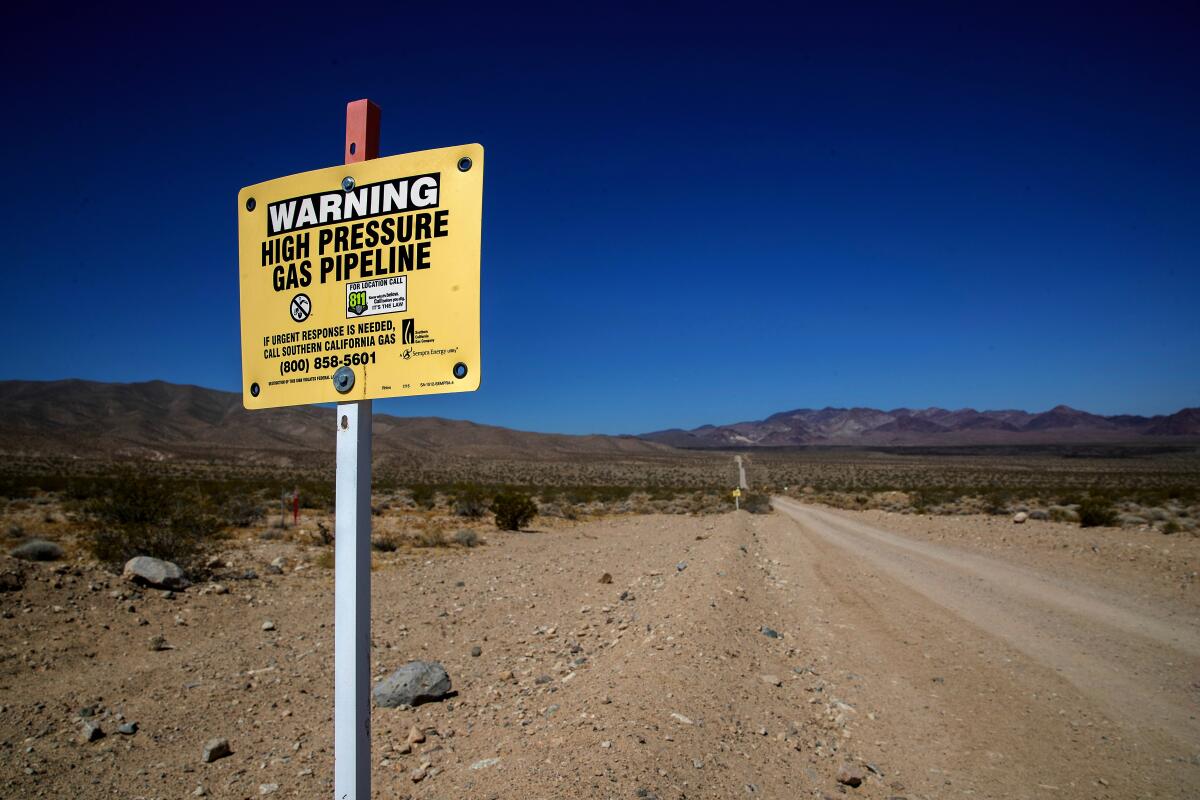
From 2015 through 2018, Sempra made campaign contributions to candidates for 28 of the city councils and county commissions that have passed “balanced energy” resolutions, The Times found — part of $4.1 million in total political contributions by Sempra over those four years. SoCalGas also gave $36.5 million over those years to charities, business groups and other organizations, including some with close ties to cities that have passed the resolutions.
Those are big numbers, although they’re dwarfed by the amounts spent by California’s largest electric utilities, Southern California Edison and PG&E. Edison and PG&E have lobbied heavily in recent years for changes that would limit their liability from fires ignited by their infrastructure.
Emissions and affordability
To meet California’s long-term climate targets, state policymakers may eventually need to take aggressive steps to ban or severely restrict fossil gas.
But electrification proponents say SoCalGas is overstating the immediate threat of state mandates, with the goal of winning support from local officials and building a coalition that can ensure more aggressive steps are never taken.
The reality, those critics say, is there have been no bills in the Legislature, and no proposals from regulators, that would require anyone to replace their gas appliances. Even Berkeley’s gas ban applies only to new construction.
To help existing buildings ditch gas, electricity advocates want to see financial incentives and educational campaigns that make electric appliances such as heat pumps and induction stoves more attractive to consumers, business owners and builders. They hope to scale up the market and drive down costs.
“The only people talking about banning gas and forcing people to electrify are SoCalGas,” said Panama Bartholomy, director of the Building Decarbonization Coalition, an advocacy group whose members include environmental nonprofits, electric utilities and appliance manufacturers.
Curtis Stone has been using induction cooktops for years.
A recent battle in Sacramento highlights the disconnect between the gas company and its critics.
Assembly Bill 3232, proposed last year by Assemblywoman Laura Friedman (D-Glendale), would have set a goal of cutting carbon emissions from buildings 50% below 1990 levels by 2030, and tasked state officials with developing a plan for all structures built after Jan. 1, 2030, to be “zero-emission buildings.”
The bill didn’t specify that new buildings would have to be all-electric. But SoCalGas lobbied against it, fearing electrification would be the eventual result.
The legislation passed but was watered down, only requiring state officials to “assess the potential” for reducing emissions from buildings 40% by 2030.
SoCalGas declined to answer detailed questions about its “balanced energy” campaign, or to make its chief executive, Bret Lane, available for an interview.
In a written statement, gas company Vice President Sharon Tomkins said keeping energy costs down “should be a top priority, especially at a time when California is undergoing what Gov. Newsom has identified as an ‘affordability crisis,’ with skyrocketing costs on everything from housing to child care.”
“California can still meet its ambitious climate goals while ensuring energy reliability and affordability for its residents,” Tomkins said. “That requires keeping all solutions on the table that can help meet its clean energy goals.”

SoCalGas released a strategy paper in April outlining its vision to become “the cleanest natural gas utility in North America.” That vision includes replacing 20% of the fossil gas in the company’s pipelines with renewable gas by 2030, and later adding large amounts of hydrogen and other non-fossil fuels.
Many clean energy advocates say those fuels are expensive or in short supply, and will never come close to replacing fossil gas. They say renewable gas should be set aside for heavy industry and other hard-to-electrify processes.
Maximilian Auffhammer, an environmental economist at UC Berkeley, compared SoCalGas’s dilemma to that of a company selling hay to feed horses, at a moment in time when horse-drawn carriages were being replaced by cars. Electrification, Auffhammer said, presents a similarly existential threat.
“If all of a sudden residential goes all electric, you’ve lost a significant part of your business,” he said. “So it’s not that surprising that the gas-only utilities are against these pushes.”
A grass-roots group, funded by industry
The public face of SoCalGas’s campaign is Californians for Balanced Energy Solutions, or C4BES, which bills itself as a coalition of “families, small and large commercial businesses, industrial users, local governments” and nonprofits. C4BES has worked to drum up opposition to electrification, hosting press events and warning that “anti-gas forces” are behind “a well-orchestrated campaign ... to tell builders what to build, restaurants how to cook, businesses how to operate facilities, local governments how to set building standards and homeowners how to heat homes and prepare the family meals.”
The California Public Utilities Commission’s consumer watchdog office uncovered documents this year showing SoCalGas laid the groundwork for C4BES — and used ratepayer funds to do so.
That sparked criticism from the Sierra Club, which slammed C4BES as a front for the gas company and asked the PUC not to allow the group to participate in developing programs to reduce emissions from buildings. SoCalGas was already a party to the regulatory proceeding.
C4BES ended up dropping its request to participate. The group’s executive director, Jon Switalski, told the PUC that C4BES had chosen to withdraw “rather than devoting precious resources on defending against attacks that have nothing to do with the proceeding.”
Since then, The Times has reviewed internal documents painting a more complete picture of the gas company’s role in C4BES.
Of the $220,000 in contributions that C4BES received from Jan. 1 through Aug. 12 of this year, $100,000 came from SoCalGas, the internal documents show. The Utility Workers Union of America, whose membership includes SoCalGas employees, chipped in an additional $25,000.
That money has gone toward radio and television ads, political consultants and lawyers. C4BES has prioritized several “targeted audiences,” including non-coastal cities, Republicans, moderate Democrats and African American, Asian and Latino homeowners and businesses, the internal documents show.
There’s just one SoCalGas executive among C4BES’s 30 board members. But 13 board members represent nonprofits, business coalitions and advocacy groups that received $830,000 in gas company funding from 2015 through 2018, a Times analysis found. Three others represent the Utility Workers Union of America.
Mike Campbell, a program manager at the PUC’s consumer watchdog office, described C4BES as an example of “astroturfing” — a tactic where a business or other powerful group tries to create the appearance of grass-roots support.
“The utility seems to be quite prepared to try to undermine the state’s climate goals,” Campbell said.
SoCalGas has rejected all accusations of impropriety. In a commission filing in May, the company wrote that the Sierra Club’s characterization of C4BES as a utility-created front group “insults the integrity of each of C4BES’s individual members and tarnishes their reputations.”
Switalski, C4BES’s executive director, said in a written statement to The Times that the group’s board members “have joined C4BES voluntarily,” and that there is “no direct correlation between their participation and any funding they may receive from SoCalGas.” He called the gas company’s participation “no more surprising than [Southern California] Edison’s active sponsorship of efforts supporting electrification, which helps their bottom line.”
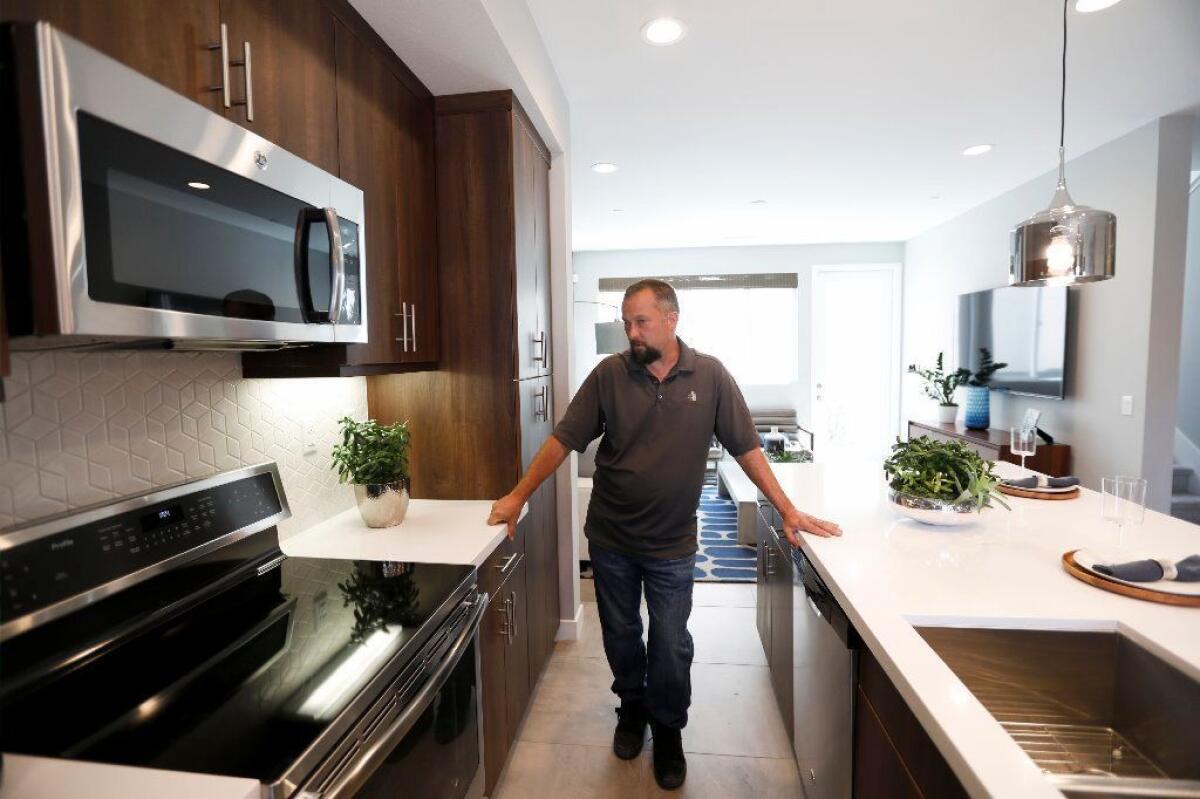
‘The genius upgrade you’re looking for’
A week after C4BES withdrew from the PUC proceeding to develop emissions-reduction programs, another group with ties to SoCalGas asked for permission to join: the American Public Gas Assn.
APGA is a nonprofit trade association that represents hundreds of municipal gas utilities. As an investor-owned utility, SoCalGas isn’t an APGA member.
But the company has helped fund the trade association’s pro-gas advocacy campaign, as revealed in thousands of pages of APGA emails, memos and presentations uncovered by the Climate Investigations Center, a nonprofit watchdog group based in Virginia.
Many of those documents — which were obtained via public records requests and public websites, and shared with The Times — detail the activities of APGA’s “direct use task group.” A January 2019 presentation from an APGA conference describes the task group’s mission: “Counter the regulatory and legislative threats to the direct use of natural gas by advocating policies, regulations & legislation that promote natural gas direct use.”
“Direct use” refers to gas burned in homes and businesses for heating and cooking, as opposed to gas burned at power plants to generate electricity.
In a 2017 letter to President Trump’s energy secretary, Rick Perry, APGA president Bert Kalisch criticized the Obama administration for proposing “flawed appliance efficiency rules” that he said would raise costs for consumers. He urged the Department of Energy to revise its methodology for calculating the economic benefits of efficiency measures “to ensure that any new or amended standards are actually justified and will serve the public interest.”
“Direct use of natural gas is in the best interests of the Nation,” Kalisch wrote.
Documents obtained by the Climate Investigations Center show a projected $295,000 budget for APGA’s direct use task group in 2018. The documents show SoCalGas was expected to contribute $50,000, with Spire Inc., another private utility company based in St. Louis, also set to chip in $50,000.
The initiative is led by Sue Kristjansson, who now runs a Tennessee utility but began her involvement with the task group when she worked for SoCalGas.
One of the task group’s main activities is an advertising campaign to promote the use of natural gas.
In presentations to gas utility officials, a hired PR firm, Porter Novelli, outlined two “near-term opportunities”: convincing residents who already have access to natural gas to use more, and highlighting the “lifestyle comforts that natural gas can enable” for homes that have access to gas but don’t use it. Porter Novelli described its target audience as current and soon-to-be homeowners between the ages of 25 and 44, with several “target audience sub-segments,” including Latino millennials, design enthusiasts, “promising families” and “young city solos.”
Porter Novelli launched its public relations blitz, dubbed “Gas Genius,” this year. The ads feature roaring fireplaces, heated baths and outdoor grills.
“Natural gas isn’t just a home upgrade. It can make your home the place your family and friends want to gather, relax and hang,” the campaign’s Facebook page reads. There’s a similar appeal on the Gas Genius Instagram account: “Natural gas is the genius upgrade you’re looking for.”
Kristjansson described Gas Genius as “an effort to reintroduce and remind our consumers about why they really like and depend on natural gas.”
“Consumers don’t think about it very often, even though their daily routines often depend on natural gas,” she said in an interview.
SoCalGas spokesman Chris Gilbride said in an email that the company is “not familiar or involved with the Gas Genius advertising campaign.”
APGA argues gas can displace higher-polluting coal and give consumers a cheap, reliable energy option at home. The trade group also says widespread switching from gas-based heating and cooking to electric appliances would make society too reliant on the electric grid.
Asked about climate policy, APGA said in a written statement that it “supports pragmatic policies to sustainably reduce global greenhouse gas emissions.” APGA members “staunchly believe their product has and will reduce” those emissions “using current natural gas technologies,” the group wrote.
Climate advocates say gas is part of the problem, not the solution. They point to studies showing, for instance, that limiting global warming to 1.5 degrees Celsius — the goal of the Paris accord — means no new fossil fuel infrastructure can be built, and some infrastructure must be retired early.
‘The eventual death of our industry’
The Public Utilities Commission has already granted APGA’s request to join its proceeding for cutting emissions for buildings, which C4BES previously attempted to join. APGA’s motion for party status described the group’s members as gas utilities “owned by, and accountable to, the citizens they serve.”
The motion says nothing about the trade association’s financial ties to SoCalGas. But in a recent weekly update to its members, APGA said it submitted its opening comments in the regulatory proceeding “with support from the Direct Use Task Group” — the initiative funded in part by SoCalGas.
APGA didn’t respond directly to a question from The Times about whether the gas company prompted the trade association to join the PUC proceeding. In a written statement, AGPA said the direct use task group “brings together approximately 20 organizations to advocate for balanced energy policies.”
“An important part of that is engaging in policy discussions and regulatory proceedings,” APGA wrote. “All members have an equal voice.”
Asked about the company’s support for APGA, Gilbride, the SoCalGas spokesman, said in an email that the trade group “approached us and asked us to support an effort to further the direct use of natural gas because of its cost-effectiveness and energy-efficiency when used for heating, hot water and cooking.”
Similarly, APGA “approached SoCalGas about submitting comments” in the PUC’s regulatory proceeding, Gilbride said.
“SoCalGas agreed that their voice representing public agencies would further inform policymakers,” he said.
In its opening comments, APGA argued that a financial incentive program being developed by the PUC to boost installation of low-emission space and water heaters amounts to “forced electrification.” And using gas utility revenue to fund such a program, APGA said, is “not reasonable,” in part because the gas industry “already invests heavily in energy efficiency projects that can achieve the environmental goals of California and will continue to do so.”
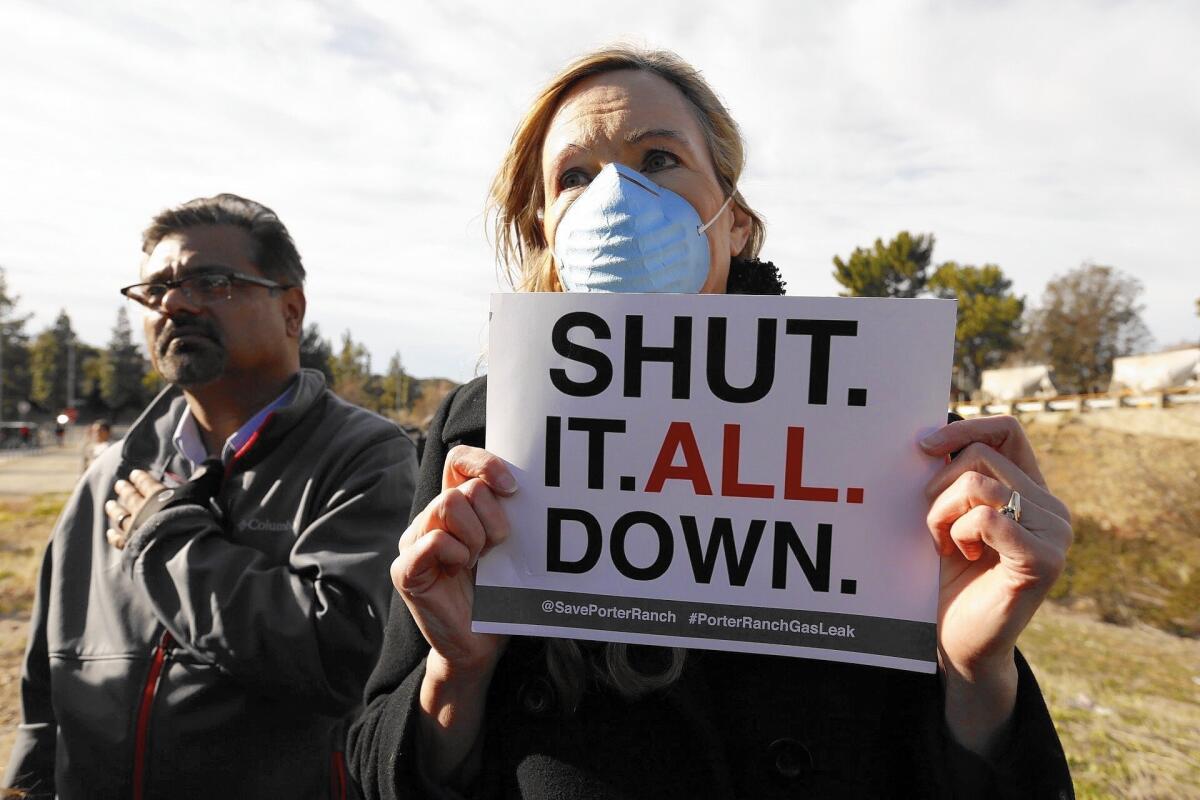
In 2017, APGA asked its members how much it should prioritize “investing staff time and resources to counter anti-fossil fuel messaging,” documents obtained by the Climate Investigations Center show.
“This is the most pressing issue of our day,” one unnamed survey respondent wrote. “If we don’t prevail on this battleground it will lead to the eventual death of our industry.”
‘Not just the gas company’
In addition to collaborating with APGA, SoCalGas has worked closely with C4BES, emails obtained by the Climate Investigations Center show.
In April, gas company staffer Robert Cruz emailed city council members from Azusa, Covina and Pomona, saying he was “asked by our senior leadership team to identify some key Latino leaders that might consider supporting the current Californians For Better Energy Solutions effort.” Over the next few months, Cruz exchanged emails with Duarte Mayor Pro Tem Samuel Kang, in which they discussed recruiting Chinese restaurant owners to C4BES.
“C4BES is not just the gas company,” Kang said in an interview.
Some local officials have agreed to co-author opinion pieces that include the gas company’s talking points.
Cruz emailed a draft of one such piece to West Covina staff in July, asking them if Mayor Lloyd Johnson would sign on as a co-author. The next week, Johnson was listed as a co-author of the published op-ed alongside two other mayors, Rosemead’s Margaret Clark and Diamond Bar’s Carol Herrera.
Johnson didn’t respond to requests for comment. But Clark said in an interview that she wrote parts of the op-ed after going “back and forth” with SoCalGas. She said she worries a gas ban would cause people’s energy bills to rise dramatically and could exacerbate California’s housing crisis.
“This is a much bigger issue to me than whether the gas company solicited people,” Clark said.
Diamond Bar’s Herrera called the opinion piece a “collaborative effort,” saying in an email that she has “an obligation to speak up for my constituents.”
The gas company has also lined up support from nonprofits.
In an August 2018 news release announcing a study on renewable gas, SoCalGas quoted representatives of 21 groups — 17 of which had collectively received $1.8 million from the company from 2015 through 2018, a Times analysis found.
A few months later, SoCalGas sent 36 letters supporting renewable gas to the PUC. Twenty-one of those letters, including several from environmental nonprofits, came from groups that had received a total of $900,000 in gas company funding from 2015 through 2018.
SoCalGas is looking for more nonprofits to fund. The company solicited applications earlier this year for its “environmental champions” grant program, with winners receiving up to $25,000. Projects involving natural gas or renewable gas “will be given special consideration,” the utility wrote.
The gas company and C4BES have touted other signs of support for renewable gas, including a recent report from a group led by Ernest Moniz, who served as energy secretary under President Obama. The report described renewable gas, hydrogen and other fuels as “critical clean energy pathways.”
The report’s sponsors included SoCalGas, fellow Sempra subsidiary San Diego Gas & Electric, the Utility Workers Union of America and several groups that SoCalGas has funded.
Moniz said in April that his team at the Energy Futures Initiative was “approached last year by a group of California natural gas distributors and users led by SoCalGas.” A spokesman for the initiative told The Times the report’s sponsors “had no control over its content or even the scope of the analysis.”
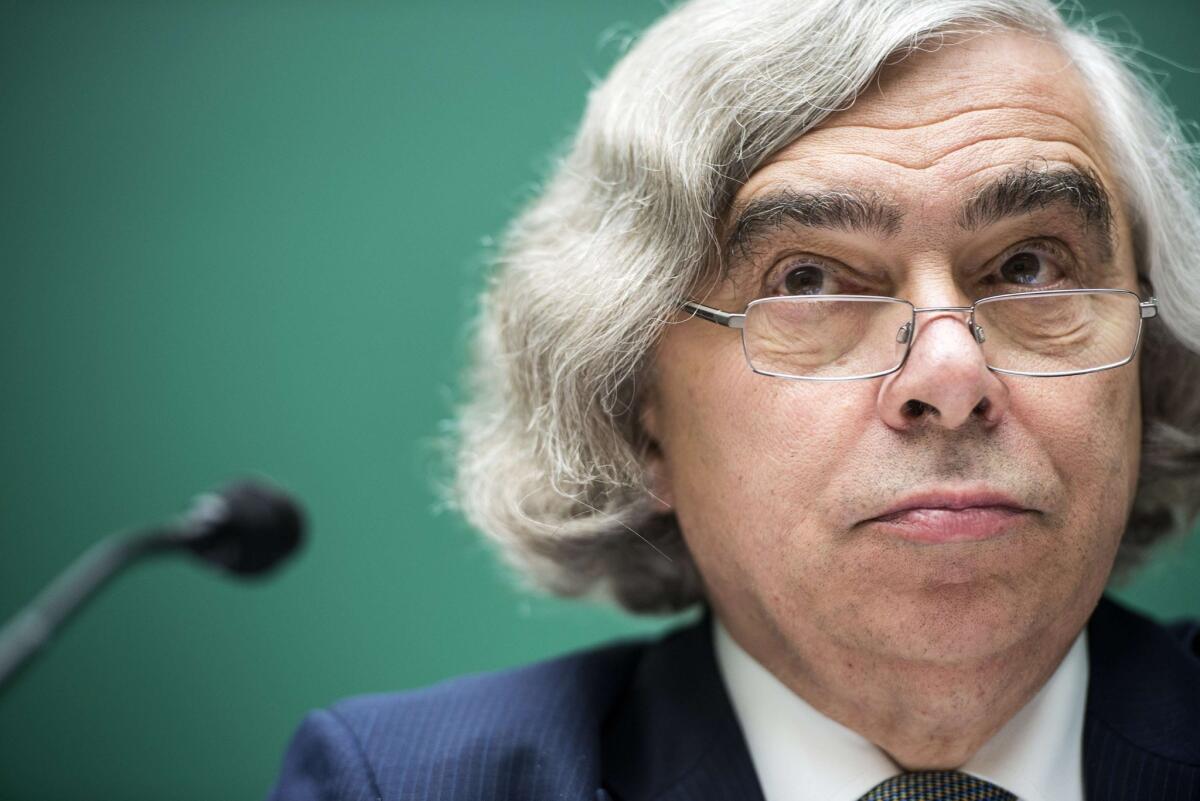
What happens next
Although state policymakers haven’t proposed banning gas in existing buildings, they have started taking action to encourage electrification.
Over SoCalGas’s objections, the PUC recently voted to allow $1 billion in annual energy efficiency funding to be spent, in part, on rebates for consumers to replace gas appliances with electric versions. The California Energy Commission updated efficiency rules to encourage construction of all-electric homes. And the Legislature allocated $200 million toward programs to reduce emissions from buildings, including incentives for low-emissions space and water heaters.
State officials haven’t ruled out renewable gas as an option. But they’ve increasingly made it clear they see electricity as the better long-term choice.
“How do we convince people that backyard pizza ovens with natural gas are probably not as good as a good convection oven?” then-PUC president Michael Picker asked earlier this year. “People are going to have to go back to Rachael Ray to get her to redo those recipes.”
Californians for Balanced Energy Solutions is thinking about how people cook in their backyards, too.
On July 11, the SoCalGas-funded group posted to Facebook and Twitter for National Grilling Month, with a GIF showing smoke coming off a grill. The social media posts claim that gas-powered backyard grills are “much cleaner, efficient and healthier” — compared to charcoal grills, not electric versions.








